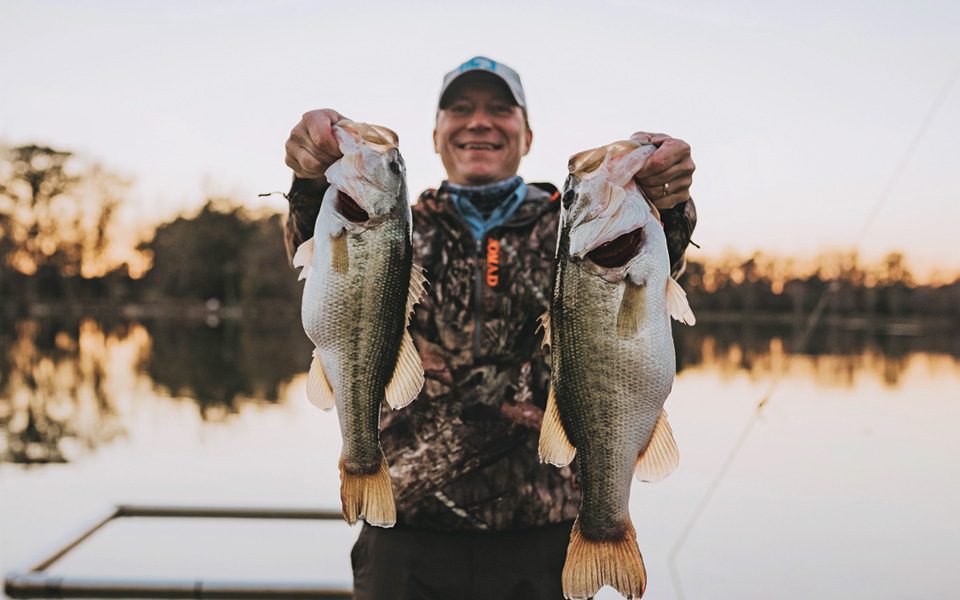By Greg Grimes
Some Advice on Fish Stocking for Trophy Bass
Growing fingerling bass into 8-pound trophies in three years is not only possible, it is probable with Aquatic Environmental’s (AES) secret formula.
It all begins with a great plan. We start with lake design that includes superior water quality and well-thought-out fish habitat. We set up fish feeders and/or a lime and fertilization program. We then utilize our proven stocking formula that includes proper ratios of forage species to exceed client goals of accelerated and sustained bass growth.
Generally, a traditional 10:1 ratio stocking is not adequate for superior growth and long-term forage for bass. That design quickly gets bass-crowded with limited forage available to over-abundant bass. AES has proven greater success with a ratio that is closer to 40:1.
We begin by stocking the forage base of high densities of bluegill and redear sunfish. Fathead minnows are a huge boost for the initial stocking and take pressure off bluegill predation. We also stock golden shiners and crawfish for additional forage. A key species in larger lakes is threadfin shad. They really build up some biomass in a fertile lake. Once forage is established, low densities of bass fingerlings are introduced.
In the following years, the addition of rainbow trout in the winter months will keep pushing bass weight limits. If double-digit bass weights are the ultimate goal, the addition of gizzard shad in year three will seal the deal. This larger prey species is key for large bass to maximize energy efficiency.
Genetics is another factor. Three options are northern, Florida and F1 largemouth bass. Northerns are aggressive but top-out around 8 pounds. Florida bass reach true giant status, but they are harder to catch and cannot tolerate severe cold. F1 bass are a mix of the two and are outstanding in many ponds. We help clients decide their goals but may mix F1 and Floridas for abundant double-digit bass and increased chances of 15-plus-pound trophies.
In an existing lake, the first step is a professional electroshock survey. Pending the results, there are several management steps to take. You will want to add forage unless your bass are growing beyond expectations, which is rare.
We prefer bluegill stocking if middle-size bluegill populations are low. Secondly, threadfin should be stocked if they have not yet been established. If results show lots of big bass, it is time to stock gizzard shad. The most cost-effective plan for a high-protein food source is the addition of crawfish. Adding rainbow trout that are half the length of most bass will also really boost bass growth. In the hot summer months add in goldfish as a slow, plump, easy-to-eat bass meal.
We are firm believers in the saying “plan your work, then work your plan.” Growing lots of giant bass requires a great plan, and if you stick to it the results will follow. Don’t waste time or money adding random fish to your pond. Utilizing the latest research will maximize dollars and results.
Greg Grimes, of Aquatic Environmental Services, Inc., can be contacted at (770) 735-3523. Check them out at www.LakeWork.com
